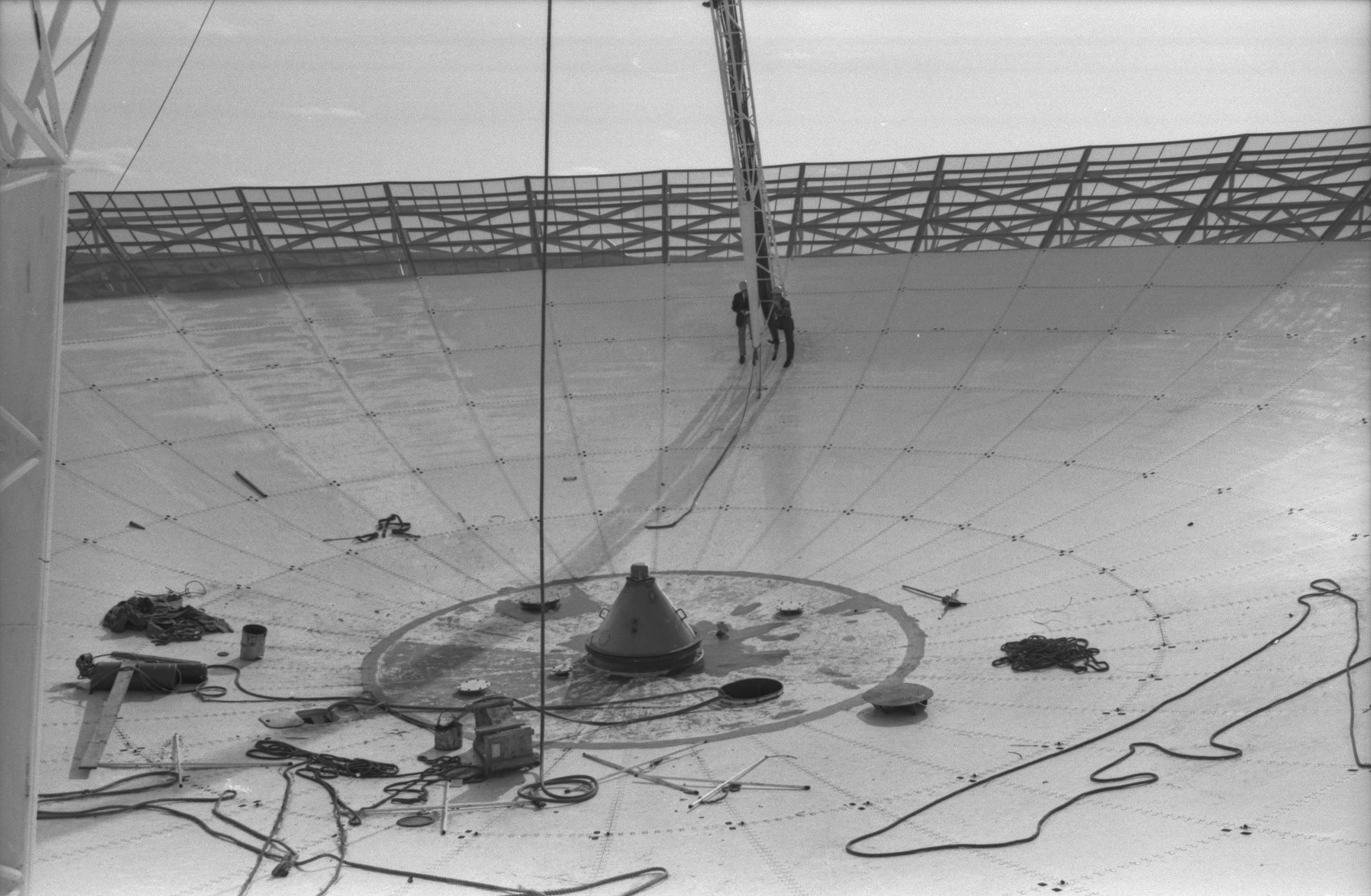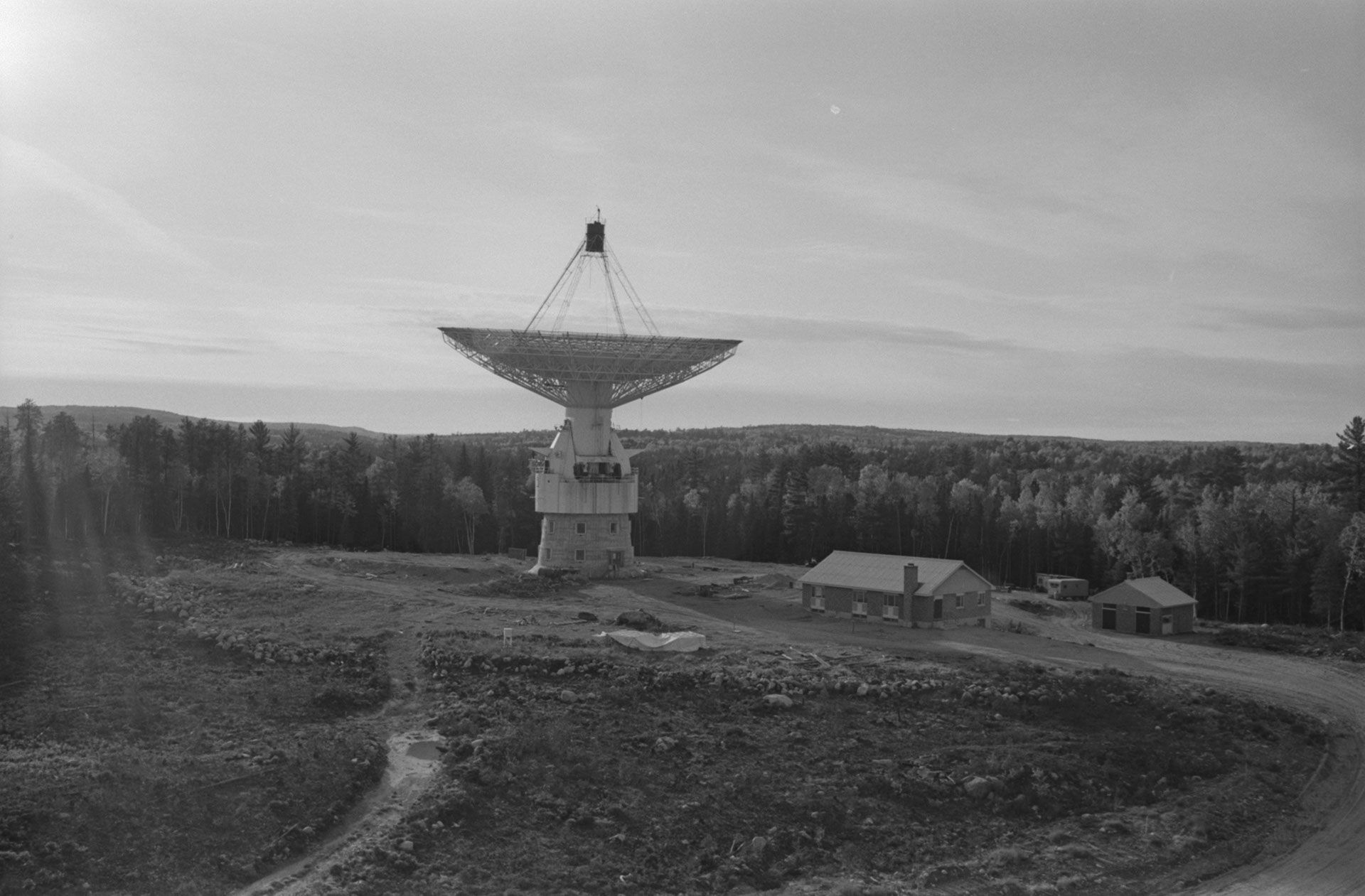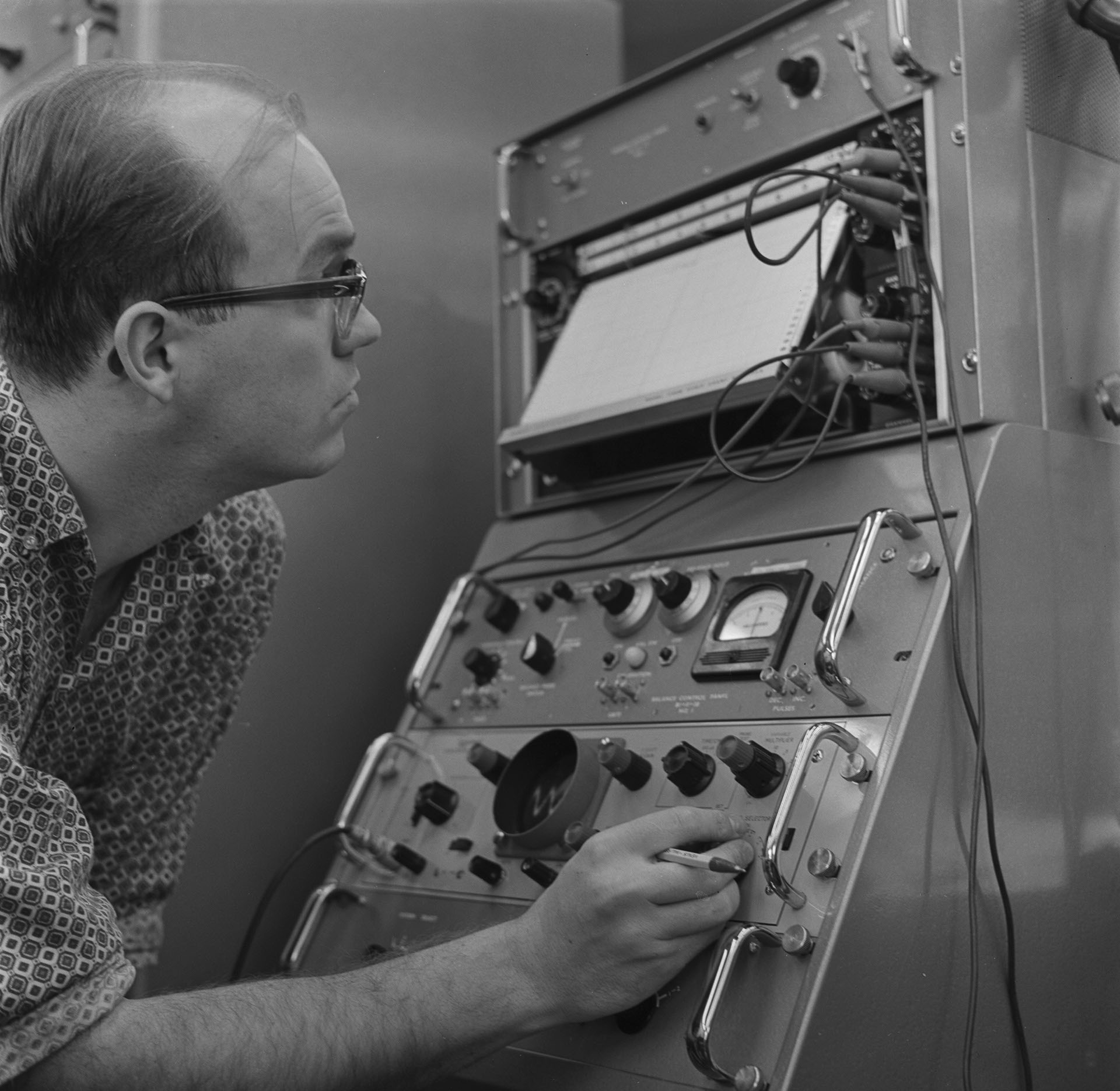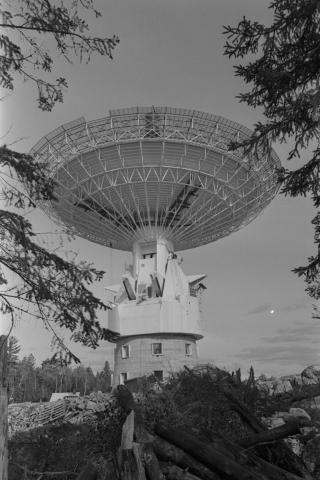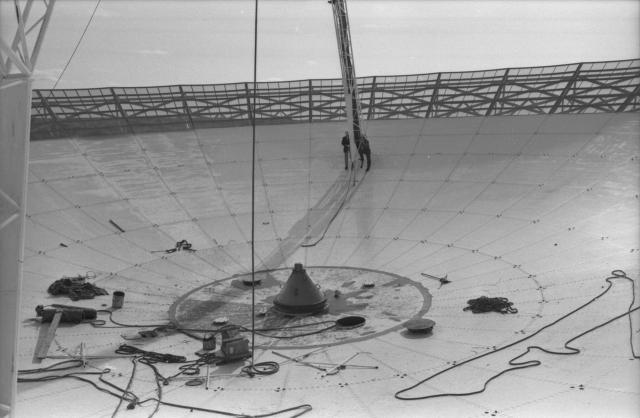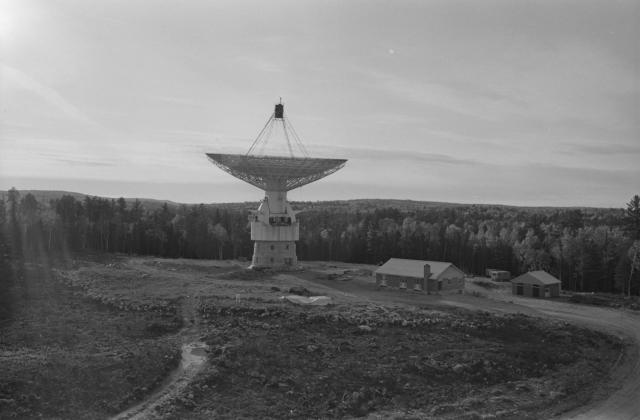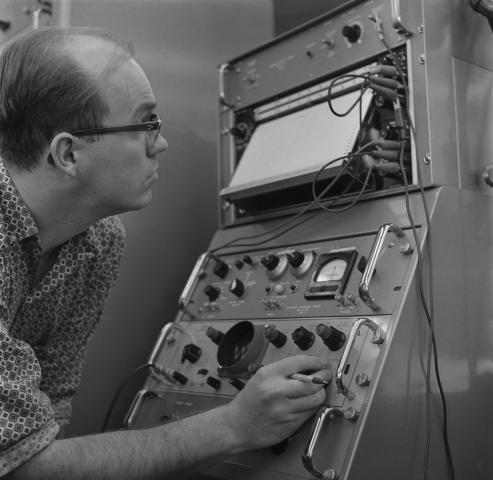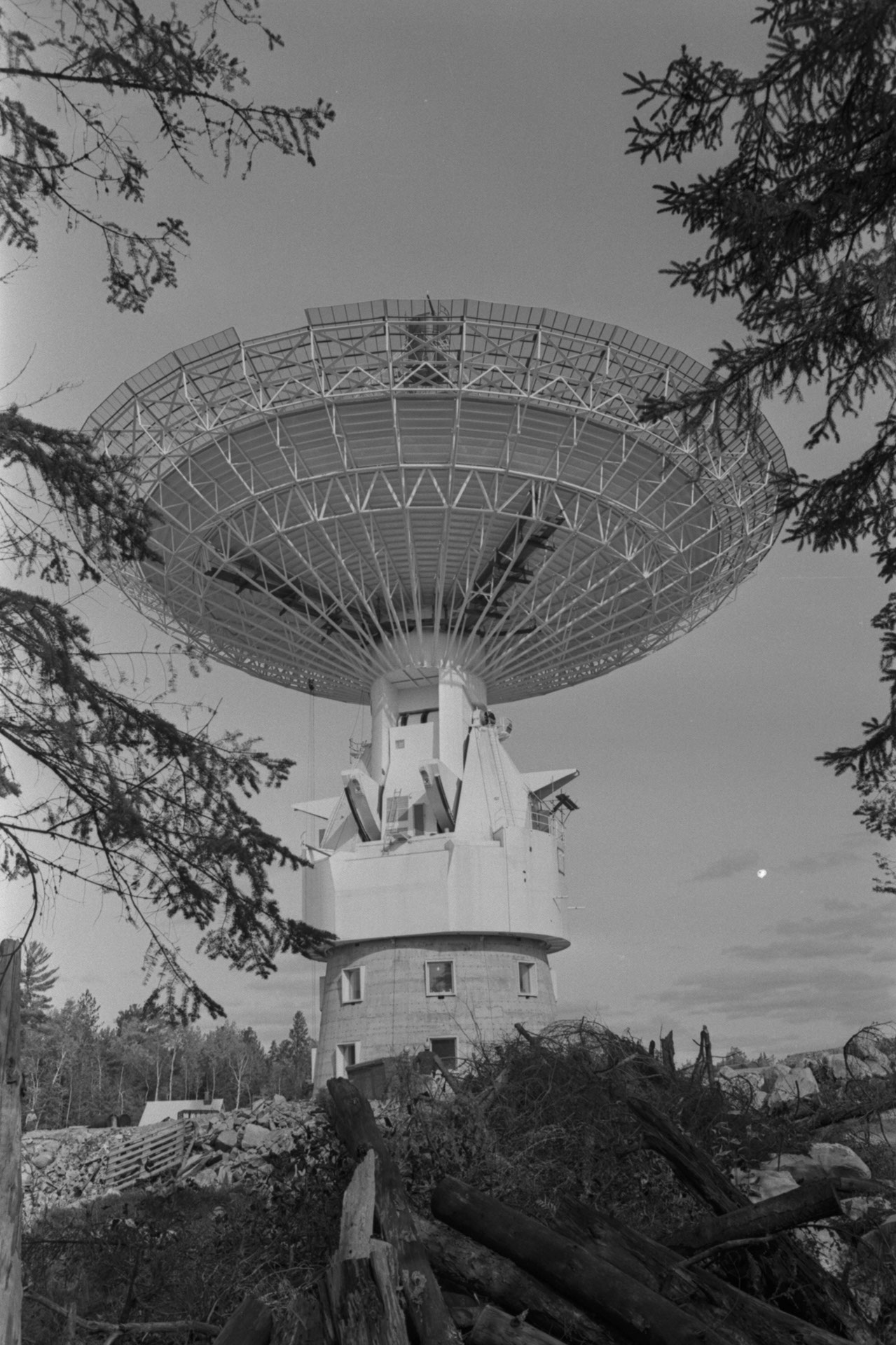
Photostory #409: Amid Ontario's Scenic Woodlands: Canada's Newest Link with the Cosmos
Photographers
,
Maker
National Film Board of Canada
Release Date
February 1, 1966
Collection
CMCP fonds
Credit Line
Canadian Museum of Contemporary Photography fonds, National Gallery of Canada Library and Archives
Main Text
Among new facilities designed to keep Canada in the forefront of world-wide research, and in particular the rapidly-evolving science of modern astronomy, is a new 150-foot-diameter radiotelescope situated deep in the interference-free wilds of Ontario's rolling forest lands. Soon to be busy on one of the most advanced programs of astrophysical investigations to take place on earth, the National Research Council of Canada's new giant telescope will overshadow the various existing radio-astronomical instruments at the Algonquin Radio Observatory which over the years have gained vital data on the mysterious radio sources in outer space. With one of its major attributes being its extremely fine resolving power in the microwave band, the big telescope is expected in the next few years to begin exploring the almost unprobed area of wavelengths shorter than 10 centimeters. Another major capability, the delicate and precise measurement of polarized radiation from sources very remote from our own galaxy, is expected to throw light on current theories concerning the universe's evolution and galactic structure. Possession of this radio-telescope will mean that Canadian scientists will be in a position to play a more prominent part in an exciting science that, though founded in 1932, has been advanced only during the past 20 years. In future, they will be able to carry out intricate studies in a field that has provided scientists with evidence on such varied aspects of astronomy as the fact that individual radio stars do exist (as opposed to radio-emitting clouds of matter), that most of the cosmic rays originate in the explosions of distant galaxies and that the intense radio emission of the planet Jupiter is polarized in a complex manner. Though many programs of study are already planned with the new radiotelescope, so rapidly do the fundamentals of pure scientific study change, that future work is quite likely to be in some new field of exploration as yet undiscovered. For a modern technological nation, the privilege of leading the way forward into the unknown is an international honor, for the scientists themselves an exciting unravelling of the mystery of life.
Subjects:

